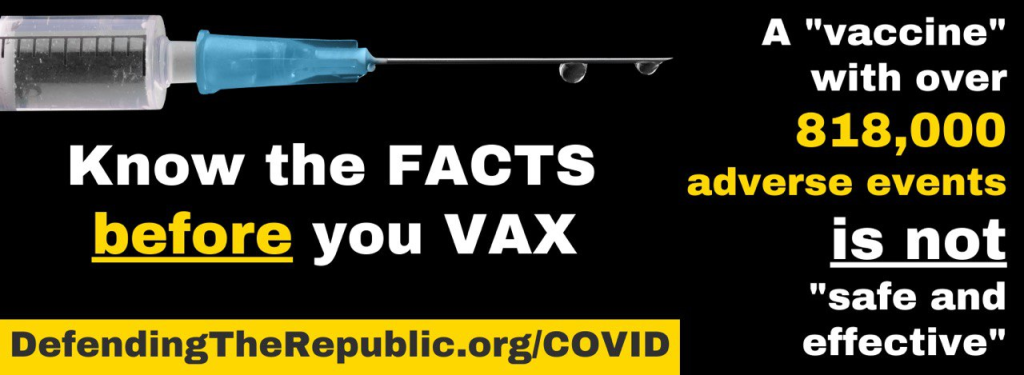By Professor Brendan Wren For The Daily Mail
Published: 23:31 GMT, 10 January 2022

Brendan Wren is a professor of vaccinology at the London School of Hygiene and Tropical Medicine
When Health Secretary Sajid Javid claimed on December 13 that there were 200,000 new Omicron infections a day, it provoked widespread concern and fear among Britons already nervous about the emergence of the variant.
The figure originated with the UK Health Security Agency (UKHSA), which is responsible for public health protection.
At the weekend, in an extraordinary intervention, the independent Office for Statistics Regulation (OSR) — the statistics watchdog — directed a stinging rebuke to the UKHSA over its assertion.
It now transpires there was no hard evidence to support this alarming figure — as many experts quickly pointed out.
Bogus
Under pressure to back up Javid’s statement, the UKHSA stonewalled for three days, then published modelling supposed to justify the picture of a variant out of control.
It did nothing of the sort. In fact, it exposed outdated modelling — the number was little more than fantasy.
The true number of new infections was more likely to be closer to 45,000.
In his unprecedented letter of condemnation, the head of the OSR, Ed Humpherson, criticised the Agency for providing Javid with a statement ‘unsupported by the data’.
He also demanded much greater ‘transparency’ on health data in future, to enhance ‘public understanding and public confidence’.
This unedifying saga has damaged the credibility of the Agency. But it illuminates what so many of the scientists, advisers and modellers responsible for formulating the national response to Covid are guilty of.
When Health Secretary Sajid Javid (pictured meeting staff at Kings College Hospital in London) claimed on December 13 that there were 200,000 new Omicron infections a day, it provoked widespread concern and fear among Britons already nervous about the emergence of the variant
That bogus 200,000 figure was no aberration. It was entirely in line with the gloomy narrative peddled since the first outbreaks of disease in early 2020.
Who can forget the terrifying forecast of up to 500,000 deaths we were given in March 2020? An instinct for caution has too often given way to the impulse for catastrophe, as epitomised by the recent warning from the government’s Scientific Advisory Group on Emergencies (SAGE) that the number of Omicron deaths could reach 6,000 a day this winter.
That’s a figure more than three times higher than the peak daily toll last January, when the more lethal Delta variant was raging and before mass vaccination. It would have equated to 180,000 deaths a month, more than we have seen in the entire pandemic.
Of course, those numbers haven’t come to pass.
Indeed, dodgy data and flawed forecasts have become the hallmarks of much of the scientific establishment, which has traded almost exclusively in worst-case scenarios. And, while many voices have said so in these pages over the past 20-odd months, I am here to say again: this must stop now.
Not least because this strategy of doom is no longer working. Omicron, as the South African scientists who first identified it told us from the start, was more infectious but less potent than the fearmongers expected.
The modelled tsunami of hospital admissions and deaths has not materialised. Nor has a deep crisis in the NHS.
‘The front-line will hold,’ Chris Hopson, chief executive of NHS Providers, which represents hospital bosses across England, said on Sunday.
In fact, we may already have passed the peak of Omicron without having introduced any new restrictions over Christmas and New Year.
In London, which has been at the epicentre of the spread of the variant, hospital admissions have steadily declined and are down more than 23 per cent from a week ago.
Across England, overall Covid case numbers are starting to fall, and the number of people on mechanical ventilators has dropped to its lowest level since October.


In Scotland, a government report has disclosed that the Omicron wave north of the border is expected to peak this week, with cases dropping rapidly thereafter.
In general, hospital stays for Omicron patients tend to be shorter than with previous variants and few of those admitted need critical care. There are fewer people in critical care beds in England than at the same time in any of the previous five years.
It increasingly looks as if Omicron may be our route out of the pandemic, as the relative mildness of its symptoms means immunity can be built up in the population.
Against this backdrop, Covid should soon come to be seen as endemic, like flu and other infectious diseases — dangerous for certain very vulnerable groups but little more than an inconvenience to most.
Paralysis
Dr Clive Dix, the former head of our brilliant Vaccines Taskforce, has called for a major rethink of our approach to Covid to promote ‘a new normality’. ‘We now need to manage disease, not virus spread,’ he wrote.
I could not agree more. We desperately need to come out of the Covid shadows cast by that over-inflated modelling.
Employers are suffering an immense burden. With a million people in isolation with Covid last week, most of whom have no symptoms or only mild ones, the economy is at risk of grinding to a halt.
Boris Johnson is said to be looking at cutting the period for self-isolation after a positive test from seven to five days
Worse, at least 10 per cent of staff at many hospitals were off work. What a bitter irony that measures designed to protect us are now actively fuelling harm by leaving vital services overstretched.
The paralysis has to be broken. And one key step would be to cut the period for self-isolation after a positive test from seven to five days. Three senior Ministers — Chancellor Rishi Sunak, Education Secretary Nadhim Zahawi and Housing Secretary Michael Gove — have spoken out in favour of this. The PM has said he is looking at changing the policy.
It is what the U.S. did weeks ago. But the UKHSA opposed the move.
It has also declared that 10-30 per cent of people may still be testing positive on Day 6 — but offered no breakdown of this ‘umbrella figure’. What about the triple-jabbed? Is age a factor? This is the kind of vital information needed to make crucial decisions.
Ironically, the UKHSA is now set to acknowledge that it was wrong in its analysis of the U.S. position.
Unjabbed
We must also end our obsession with testing healthy people, which is only perpetuating unnecessary absenteeism while doing little for public health. The current expensive, intrusive testing regimen was designed for a very different Covid threat.
We also need, as the OSR demands, much greater transparency on data.
When it comes to Covid deaths, for instance, we should be told how many died from the disease and how many with the disease. The latter will include many people with terminal conditions such as cancer or kidney failure.
Why are we not updated regularly on the percentage of intensive care patients who are unjabbed? We have heard anecdotally from doctors that it is 90 per cent.
Openness is an aid to public understanding and, in fact, there is plenty of good news on our progress against the virus. But it has been crowded out by wilfully concocted pessimism, cynically used to wield control.
When the pandemic is finally over and independent inquiries are launched, the fear-mongering at the heart of the public health establishment may well emerge as the greatest scandal of all.
- Brendan Wren is a professor of vaccinology at the London School of Hygiene and Tropical Medicine

_______________________________
If you are looking for solutions (lawyer, form, gathering, action, antidote, treatments, maybe this could help you:
HERE
If you want to fight back better:
https://childrenshealthdefense.org/child-health-topics/health-freedom/defender-days-sticker-gallery/
Find the others: www.freedomcells.org
If you like our work please consider to donate :




Spike Protein Protocol
Glutathione (most important for body detoxification) or better
NAC = N-Acetyl-Cysteine 600-750mg (causes the body to produce glutathione itself)
Zinc
Astaxantin 5mg (also improves vision)
Quercetin
vitamin D3
Milk thistle (also liver and stomach protection)
Melatonin 1mg to 10mg (against 5G)
Alternatively CDS/CDL and zeolite
Dr. Zelenko’s Protocol contains Ivermectin, Hydroxychloroquine (HCQ), Zinc, Vitamin D3, and Quercetin.
If you want to find the truth :
search engine: www.duckduckgo.com
Videos: www.brandnewtube.com
www.odysee.com
www.bitchute.com
Facebook style: www.gab.com
 RSS Feed
RSS Feed













 January 14th, 2022
January 14th, 2022  Awake Goy
Awake Goy  Posted in
Posted in  Tags:
Tags: 
















